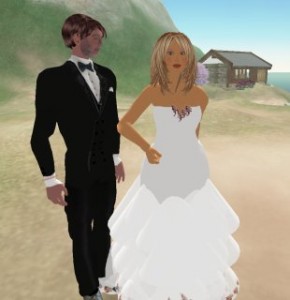
It was over three years ago that I took the plunge into virtual worlds. There was a lot of momentum building in the gaming and social networking arenas and a lot of money and energy being spent to build and draw people into these virtual environments. The predictions at that time, including mine, were that VWs (virtual worlds, not Volkswagens) would continue to mature and eventually become the next generation of the web. People eventually wouldn’t logon to a website or service anymore as much as they would step into it.
However, as CNet’s Daniel Terdiman observes in a recent column, the wind is out of the VW sails. Much of the energy lately has gone into social gaming like Farmville and Mafia Wars or into the kid-friendly 2.5D worlds of Club Penguin and Habbo Hotel. Meanwhile, worlds like Second Life and even the more game oriented World of Warcraft have been technically stagnant. So are VWs dead? In short, no. They’re just taking a more circuitous route than anticipated.
Several factors are at work here. A key one being that the economy has seriously slowed the flow of cash into funding new development of any sort. Lots of industries have gone technically fallow over the last 18 months or so. Flash based games and Facebook games are dirt cheap to produce by comparison. So it’s not surprising that this is where the effort is going. Still, in many respects, the social nature of gaming and online activity has continued to grow apace. The growth of Facebook, Twitter, the interactive commentary on most every blog and news service, networked game consoles with multiplayer games, and other similar applications continue to point to consumers being ever more comfortable connecting, interacting, and sharing online. Virtual Worlds remain the next logical step. An immersive experience where the user is projected into the social interaction rather than typing and reading at its periphery.
The advent of mainstream 3D movies, like Avatar, and games, like Call of Duty have made great strides in acclimating people to the idea that realistic environments can be manufactured. Meanwhile, 3D televisions and computer monitors are poised to bring 3D content into our homes over the next few years. Very high bandwidth symmetrical Internet connections are also moving into the home. (More slowly in the USA than elsewhere, but that’s a different topic.) And new interface technologies such as Wii controllers and Microsoft’s Project Natal will free people from cumbersome keyboards and gaming handsets and allow them to interact with the VWs in natural and intuitive ways. All the trends continue to point a future where a virtual world based web is as common and accepted as having a Facebook page is today. All we really quibble about is the timing.
Yet even with all the technological and sociological convergence toward a VW based future, there remains an enormous hurdle. Second Life founder Philip Rosedale said, “The deeper, fully immersive virtual worlds, as Second Life has shown, it’s just a huge amount of work.” Chris Sherman, lead organizer of the Virtual Worlds conference added that the cost of building 3D worlds and “the return on investment is simply not there.”
VWs, even fantastical ones, are fundamentally built from objects in our real world. The trees may be purple and the people blue with tails, but these are all elemental structures we are familiar with. Moreover, in the same way that most people’s Facebook pages are pretty reflective of their real selves, it’s reasonable to assume that most VWs will also be reality-based. Currently, the process of turning objects in the real world into 3D models is painful and expensive. It’s well within the grasp of Hollywood, but remains outside the capability of the average consumer to perform or to pay for. This is the nut that remains uncracked.
Not to fear though. Eventually, somebody will devise a process to affordably capture snippets of the real world and make them available for you and I to share and use. In principle, it’s much like photography. Once an arcane art, but simplified by George Eastman and made accessible to everyone so that their world, their memories, their lives might be tangibly shared. Same idea, different century. If only George were around today… this seems like the sort of opportunity he’d be all over.
